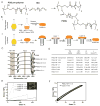A highly tunable biocompatible and multifunctional biodegradable elastomer
- PMID: 23239051
- PMCID: PMC3905612
- DOI: 10.1002/adma.201203824
A highly tunable biocompatible and multifunctional biodegradable elastomer
Figures



References
-
- Serrano MC, Chung EJ, Ameer GA. Adv Funct Mater. 2010;20:192.
-
- Stuckey D, Ishii H, Chen QZ, Boccaccini A, Hansen U, Carr C, Roether J, Jawad H, Tyler D, Ali N, Clarke K, Harding S. Tissue Eng Part B. 2010;16:3395. - PubMed
-
- Wang YD, Ameer GA, Sheppard BJ, Langer R. Nat Biotechnol. 2002;20:602. - PubMed
-
- Guan J, Sacks M, Beckman E, Wagner W. Biomaterials. 2004;25:85. - PubMed
-
- Yang J, Webb AR, Ameer GA. Adv Mater. 2004;16:511.
Publication types
MeSH terms
Substances
Grants and funding
LinkOut - more resources
Full Text Sources
Other Literature Sources

